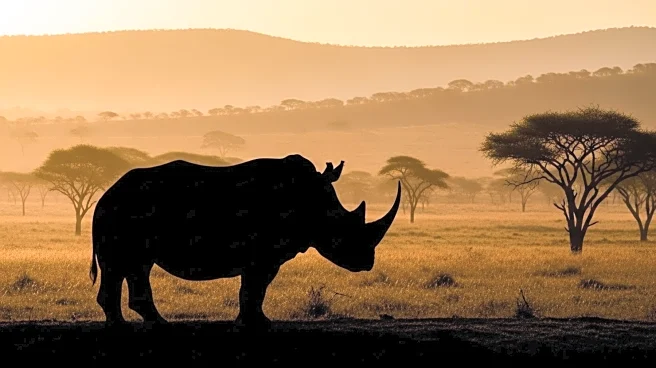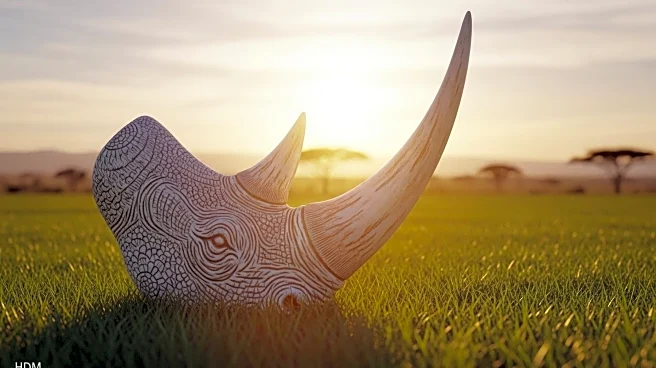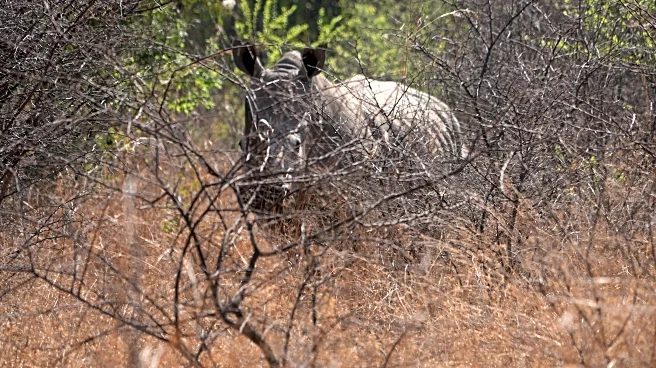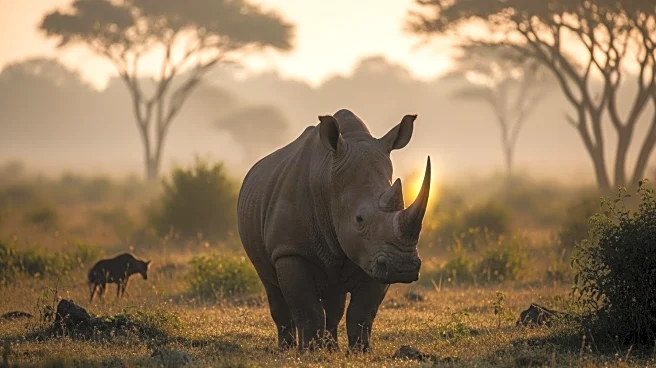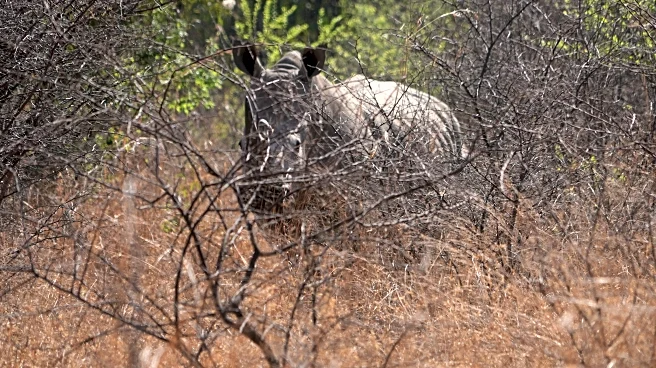What's Happening?
Rhino poaching in South Africa continues at an alarming rate, with one rhino killed daily on average. Despite various conservation strategies, such as dehorning and using radioactive material to trace illegal horns, the demand for rhino horn remains high in parts of Asia. This demand is driven by its use in traditional medicine and as a luxury item. However, there have been conservation successes, including the rebounding populations of greater one-horned rhinos in India and Nepal, and advancements such as the first successful IVF pregnancy in a rhino.
Why It's Important?
The ongoing poaching crisis highlights the challenges faced by conservationists in protecting endangered species. The high demand for rhino horn in Asia poses a significant threat to rhino populations, impacting biodiversity and ecological balance. Successful conservation efforts, such as population rebounds and technological advancements, offer hope and demonstrate the potential for reversing the decline of rhino populations. These efforts are crucial for maintaining biodiversity and supporting ecosystems where rhinos play a vital role.
What's Next?
Continued vigilance and international cooperation are necessary to combat poaching and illegal trade. Conservationists may focus on expanding successful strategies, such as dehorning and habitat restoration, to further reduce poaching incidents. Additionally, raising awareness and reducing demand for rhino horn in consumer markets are critical steps in ensuring the survival of rhino species.
Beyond the Headlines
The ethical implications of poaching and the illegal wildlife trade raise questions about human responsibility towards endangered species. Long-term shifts in conservation strategies, including community involvement and technological innovations, could redefine how societies interact with and protect wildlife.

